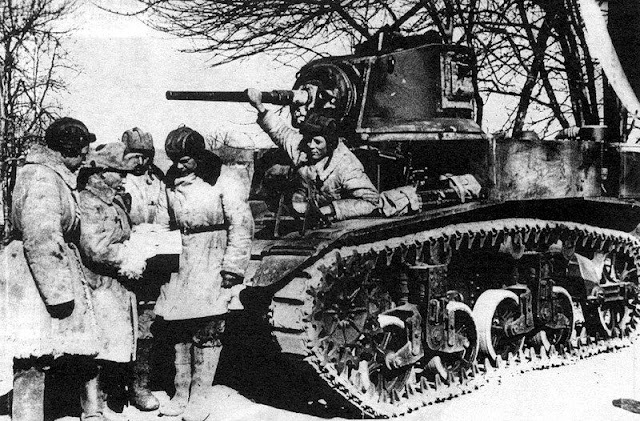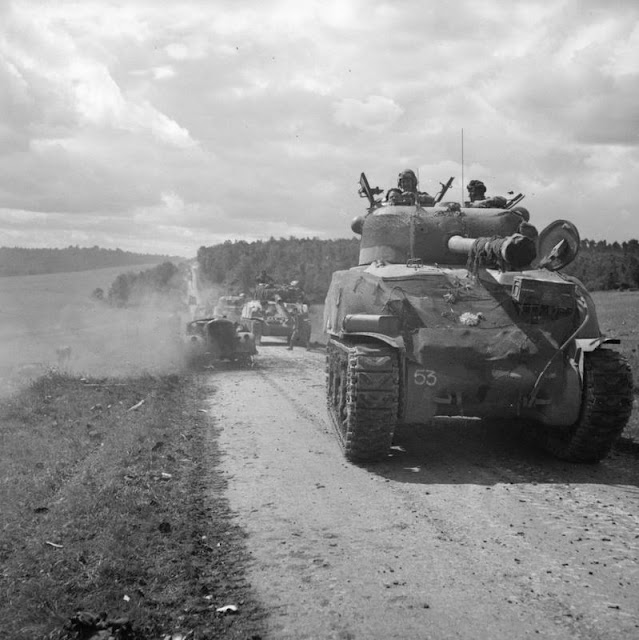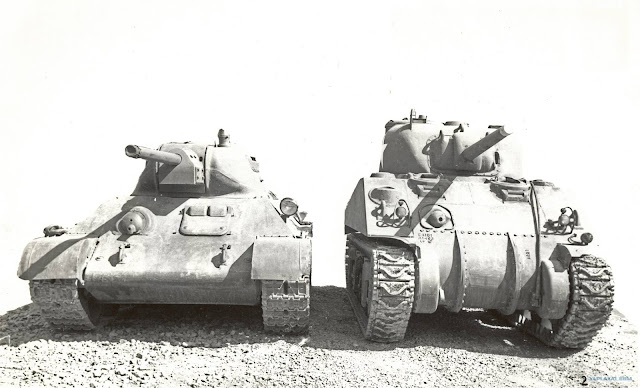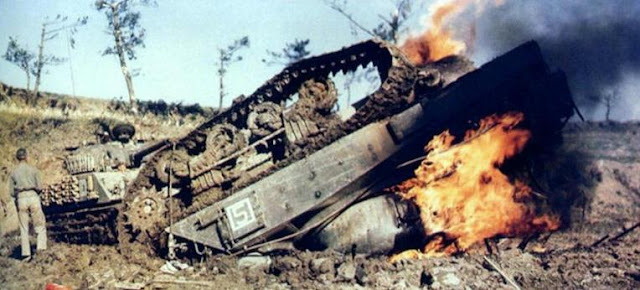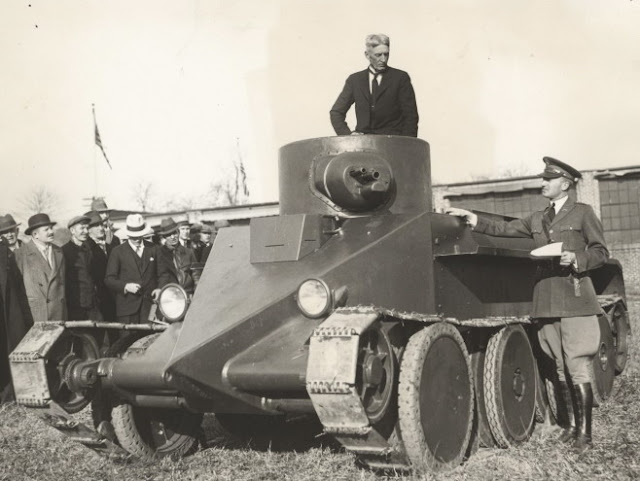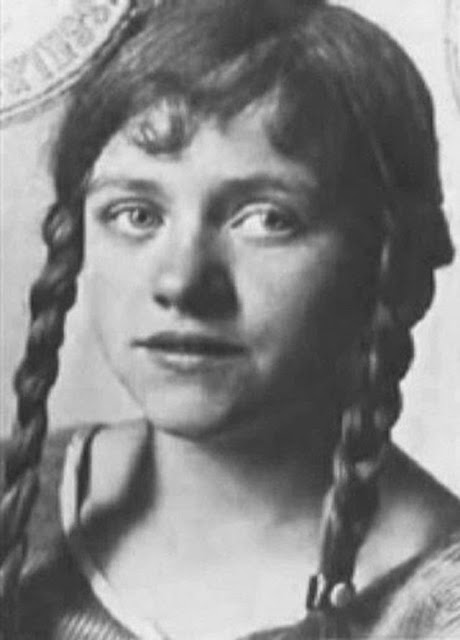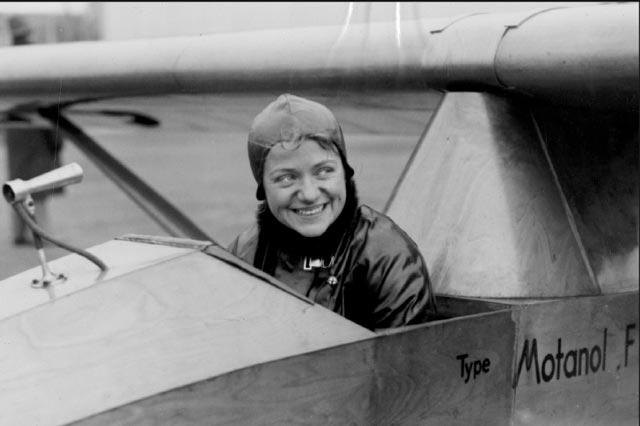The Eternal Aviator
Some German figures of World War II are difficult to write about. There are things about them which are exciting and romantic - but, they served a horrible cause. However, write about them we must, because they are important figures in history from whom we can learn, pivotal figures of the last (hopefully) world war.
Whether you take inspiration from such figures is your affair, and easy if you can separate out the laudable qualities from the political associations that you don't personally like. This article is intended for those who want to learn about a true giant of aviation, albeit an extremely controversial one:
Hanna Reitsch, a woman who blazed a trail of glory and heartbreak for those interested in true female pioneers who achieve because of what they do and not who they are.
 |
| Hanna Reitsch on 27 August 1938 (Heinrich von der Becke, Federal Archive). |
Let's start from the beginning.
Pre-War Year
Hannah Reitsch was born in Hirschberg, Silesia in the German Empire (Jelenia Góra in modern Poland) on 29 March 1912. While a pre-med student in Berlin, she became interested in flying and signed up for flying lessons at the German Air Mail amateur flying school in 1932.
She showed such promise that the following year she quit school early and became a full-time glider pilot and instructor in the town of Hornberg in Baden-Württemberg (southwest Germany). It was the right time to begin a flying career, because the new Chancellor of Germany, Adolf Hitler, had plans for German aviation. Big plans.
 |
| Hanna Reitsch with aircraft designer Alexander Lippisch, center, and Willy Messerschmitt, right. |
Glider flying was the best way for would-be pilots to get experience at the time due to the restrictions of the Treaty of Versailles. Hanna developed her skills in the company of several other young pilots who also would make names for themselves in years to come, including Peter Riedel and Heini Dittmar.
 |
| Hanna Reitsch on 25 July 1938, around the time of her pioneering helicopter work. She is wearing her Luftwaffe Pilot's Badge & Glider pin. It is hard to tell, but Hanna appeared to be wearing the glider pin during her last filmed interviews in the mid-1970s. She may have viewed her gliding work as her most important accomplishment. |
The three went on an expedition together to Argentina early in 1934 to experience the thermal currents there, and Hanna became only the 25th person in the world - and the first woman - to earn the prestigious Silver C Badge for glider pilots (meaning they went at least 1000 meters high, completed a five-hour flight, and flew at least 50 km in one flight). Hanna also worked with the top German film company, Ufa, as a stunt pilot and set virtually all the early glider records for women. The Luftwaffe was ramping up and looking for new talent, and her growing skills led Hanna to become a test pilot in 1935.

Hanna, already qualified on powered planes, quickly began testing the limits of Luftwaffe aircraft. She became adept at performing aerobatics in a Focke-Wulf Fw 44 biplane, which impressed Ernst Udet, one of the world's top aerobatics pilots himself. Udet happened to be a World War I ace and friend to fellow ace Hermann Goering, as well as a top Luftwaffe General. He made Hanna the first Flight Captain in the world.
Through his position as head of the T-Amt (the development wing of the Reichsluftfahrtministerium) (Reich Air Ministry), Udet had Hanna posted to the Rechlin-Lärz Airfield development airfield north of Berlin in September 1937. Another reason for her rapid advancement was the fact that she was a fervent supporter of Hitler, fully committed to the regime and its development.
It was an amazing time to be a German test pilot. Rechlin was ablaze with exotic aircraft that nobody had flown. Hitler was throwing huge resources into airplane development, and brilliant German designers such as Kurt Tank at Focke-Wulf had opportunities to expand the limits of aviation. Jet engines, helicopters, rockets - everything was going on at once, and the Luftwaffe needed brave and skilled pilots to try out its new and untested equipment. It was the most advanced aviation facility in the world. Hanna Reitsch stepped forward along with her friends from the glider days and took the risks.

Some view Hanna as a kind of feminist icon, but that was not her thing. She was candid about the fact that some men resented "this girl's" presence, but Hanna never portrayed herself as "breaking ceilings" or "being the first woman" in the fashion of a modern feminist. She never suggested that beating men or proving a point against them was her goal. In fact, throughout her life, Hanna respected strong men and gravitated to them. Hanna enjoyed her success, but she wasn't doing it "for women"; she was doing it to accomplish new things just like the men, to push the barriers of speed and performance.

Reitsch was "goal-oriented." This non-confrontational perspective might seem alien to feminists today, but it was part of the reason why Hanna succeeded and prospered. The only part of her attitude recognizable as "feminist" is that she became an idol and mentor to girls - imbuing them with the Hitler spirit and drawing them to the cause. That, however, was not her goal, just a byproduct of her own success. If she led, she led by example, not design.

In 1938, Professor Heinrich Focke of Focke-Wulf had a strange new craft that he wanted to show to the world. Designed by Focke himself along with engineer Gerd Achgelis, it was a huge leap forward from autogyros, a craft powered by two rotors capable of independent vertical flight. As the first of its kind, this "helicopter" - years ahead of Igor Sikorsky's first helicopter in the United States - was ready to be demonstrated to the world. Focke, knowing that the world press would ignore a demonstration at some remote German airfield, decided that he would force the press to take notice. He knew just how to do it.
 |
| Hanna flying the Fw 61 in the Deutschlandhalle in 1938. It was created around an Fw 44 frame of the kind she had used to perform aerobatics. Igor Sikorsky in the United States was still years away from flying anything like this. |
Focke waited until the annual Berlin auto show which always attracted press from around the world. He trucked the helicopter, a Focke-Wulf Fw 61 (one of only two ever built), to the nearby Deutschlandhalle. Perhaps to make the experience even more exotic, he asked the photogenic Hanna Reitsch to demonstrate the craft. Never having flown a helicopter before - virtually nobody in the world had - Hanna got in and experimented with the controls.
You push this forward, and the craft does this, you step on this pedal and it does that - this was all the instruction Hanna had. Focke then invited in the world press, and Hanna flew the helicopter inside the stadium flawlessly - the first time anyone ever had done that. Hanna continued flying the craft (it had counter-rotating rotors, so required no tail rotor) nightly. For this, Hanna Reitsch received the Military Flying Medal.
World War II
Propaganda Minister Joseph Goebbels was always looking for propaganda heroes, and Hanna was a natural. She continued to demonstrate the Fw 61 for audiences, but also found time to set a record in the DFS Habicht sailplane in the Cleveland National Air Races. The Luftwaffe gave Hanna a Dornier Do 17 twin-engine bomber for her personal use, and she would fly around testing new aircraft and performing at different airports. Among the aircraft she tested were the Junkers Ju 87 Stuka dive-bomber, the DFS 230 glider for carrying troops (used at Belgian fortress Eben Emael), and a special Do 17 outfitted to cut barrage-balloon cables.
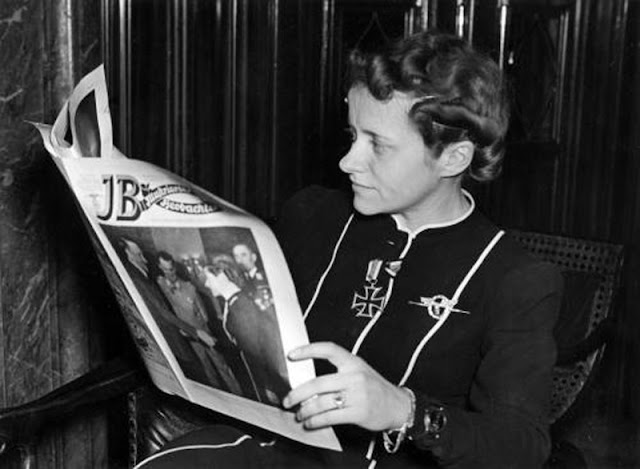 |
| Hanna with a familiar face on the magazine's cover. |
One of the top Luftwaffe "wonder weapons" of the war's final years was the Messerschmitt Me 163 Komet. Powered by a rocket, it was exceedingly fast. However, it also was extremely dangerous to fly because the engine cut out after a few minutes, after which the pilot had to glide down to a high-speed dead-stick landing. Hanna flew the dangerous craft four times with success, but on the fifth flight, she overshot the runway and, with no power, had to bring the craft down one way or another. It resulted in a horrible crash. Hanna survived but incurred serious injuries to her nose (which had to be rebuilt) and face. Adolf Hitler personally awarded her the Iron Cross First Class for this incident, which kept her in the hospital for five months.

Hanna's celebrity made her a valuable tool of the government. With the Wehrmacht reeling from the catastrophe at Stalingrad, Luftwaffe Colonel-General Ritter von Greim had her visit airfields on the Eastern Front in her personal Fieseler Storch plane to raise morale. However, Hanna remained a top test pilot, not just a propaganda hero, and this exposed her to a lot of danger. While visiting the Peenemünde Army Research Center on an island in the Baltic later in the year, Hanna was present when the RAF bombed it in Operation Hydra on the night of 17 August 1943. Hanna was sleeping in a nearby barracks not targeted by the bombers and claimed to have slept through the attack.

The war situation became desperate in 1944, and with great reluctance, some in the Luftwaffe began considering suicide planes for use against Allied bombers. Nobody was very enthusiastic about the project, including Hitler, but the bombers were destroying German cities with impunity and something had to be done. Hanna herself went to Hitler at Berchtesgaden on 28 February 1944 and proposed the idea, and she charmed him into approving it. However, they still had to settle on a plane to use.
 |
| A Me 328 pulse jet fitted with a bomber in a Mistel configuration. |
Hanna first tested the Messerschmitt Me 328, a failed pulse-jet fighter adapted as a suicide weapon, but the engines proved too unreliable for combat. Otto Skorzeny then tipped her off to a project he was working on for his Leonidas Squadron: a manned version of the V-1 cruise missile. Termed the Fieseler Fi 103R Reichenberg, it had the same problem as the Me 163 Komet: very difficult high-speed landings. She flew the Reichenberg successfully several times, but the Luftwaffe quietly shelved the program in early 1945. This incident was portrayed in the opening scenes of "Operation Crossbow" (1965) with great artistic license.
 |
| Hanna Reitsch posing with the manned V-1 cruise missile "Reichenberg." |
It is fair to ask if what Hanna Reitsch did was unique aside from being a woman with her extraordinary (for anyone) career. The answer is yes... and no. Hanna did nothing that her friends and colleagues Peter Riedel and Heini Dittmar did not or could not do in terms of flying new planes. Of course, all had different "firsts" to their credit. For instance, Dittmar first flew the Me 163, not Hanna. However, there is one thing that Hanna Reitsch did that could never be duplicated.
 |
| The Tiergarten (here in 1945/46) was converted into an emergency airstrip. (Foto: picture-alliance / Everett Colle). |
The Reich was falling, but Hanna Reitsch was unbowed. The Soviets had surrounded Berlin, and Adolf Hitler refused to leave. He dismissed Reichsmarschall Goering on April 23rd for treason and replaced him as head of the dying Luftwaffe with Hanna's old friend von Greim. The only way for the General to accept the appointment, however, was to fly into burning Berlin directly over the encircling Soviet forces. He would have to land on the Tiergarten, the main thoroughfare near the bunker which had been converted into an airstrip. Von Greim asked the best pilot available, a true daredevil, Hanna Reitsch, to fly him in using her Fieseler Storch. They came in at night under heavy Soviet anti-aircraft fire, and von Greim was hit by anti-aircraft fire in the right foot, but they made it.
 |
| Hanna Reitsch was one of the very few females to earn the Iron Cross First Class, and she wore it with great pride. |
What happened next has become the subject of conspiracy theories and controversy. It also may have affected events decades later in another way, which we will get to below. Reitsch helped carry von Greim down into the bunker. After appointing him Generalfeldmarschall and (last) commander-in-chief of the Luftwaffe, Hitler ordered von Greim to rejoin the intact Wehrmacht command in northern Germany to organize a relief of Berlin. Reitsch would have to fly him out, once again directly over the nearby Soviets. Hitler gave each of the two visitors cyanide capsules and rejected Hanna's plea to say and die with him. Under orders, Reitsch flew von Greim out again that night in an Arado Ar 96 on 28 April under the astonished eyes of nearby soldiers of the Soviet 3rd Shock Army. The flight in and out of Berlin during the last days became legendary and one of the epic tales of the dying Third Reich.
 |
| Hanna greeting some BDM girls. |
The pair made it out, but the war basically was over. Less than two days later, Hitler was dead. The question lingers for many historians whether perhaps Hitler escaped with Reitsch. That is answered with a resounding "No!" by the history books, and we shall leave it at that.
Hanna was captured with von Greim and other Reich leaders in northern Germany at the end of the war. The Allied interrogators were bemused by Hanna because German women generally did not become high profile figures in the Third Reich. An interrogator posed the question to her about what actually had happened during the trip to the Berlin bunker. She responded:
It was the blackest day when we could not die at our Führer's side.... We should all kneel down in reverence and prayer before the altar of the Fatherland.
The astonished interrogator asked Hanna where the "altar of the Fatherland" was located. She replied:
Why, the Führer's bunker in Berlin
The Allied did not really know what to do with Hanna. She was an outspoken supporter of Hitler, but she was not accused of any war crimes and was not even a member of the military. After holding her for 18 months (for no reason), they released her. No charges.
Post-War
Life, of course, could never be the same for Hanna Reitsch. Her entire family, living in what was widely known to become part of the Soviet occupation zone (and soon to become part of Poland, which was not known), was convinced that they would not be allowed to remain there (which was accurate). They committed suicide after fleeing to western Germany (Hanna's father shot her mother, sister, and her sister's three children, then himself). Just like after World War I, German civilians were forbidden from flying powered aircraft, but gliding soon became permissible again. Returning to her original love, Hanna Reitsch began entering glider competitions. She set numerous glider records and in large part rehabilitated herself, becoming the German Champion in 1955. She fascinated leaders around the world. Hanna met Indian Prime Minister Jawaharlal Nehru and established a glider school in New Delhi, then met President John F. Kennedy. After that, she moved to Africa, which was near Europe but far away in spirit at the same time.
 |
| Hanna with Kwame Nkrumah on the first anniversary of their flight school. From Reitsch, "I Fly for Kwame Nkrumah" (Munich: JF Lehmanns Verlag 1968) 35. |
Invited to Ghana, Hanna charmed the country's strongman, Kwame Nkrumah, and set up a glider school for him. The West German government contributed to the school. While the western press would have been aghast at her closeness to the government - any government - it was far away and irrelevant in Ghana. There is some speculation that Hanna and (the married) Nkrumah were involved. This is another untidy aspect of Hanna's life that does not fit into the usual pigeonholes to which we assign people.
 |
| Hanna Reitsch, perhaps around the time of the 1971 Helicopter World Championship. |
After Nkrumah was overthrown in 1966, or at least after he passed away in 1972, Reitsch cut her ties with Ghana and resumed her pursuit of international glider records.
Hanna Reitsch's Last Days
Hanna was vigorous throughout the 1970s. She continued to set glider distance records and even returned to helicopter competitions. In 1971, she won the female class in the 1st Helicopter World Championships with co-pilot Doerli Schrimpf. In 1979, she set her last record, the Women Out & Return World Record (805 km) flown over the Appalachian Ridges. Her last flight over the Alps in June 1978 was later repeated in a vivid documentary that fully captured the glorious, soaring experience (see below). As she undoubtedly would have wished, the star is the experience and the glider, not Hanna - but she is the true creator.

Hanna, however, now was a bitter woman. Her bitterness had nothing to do with herself, but rather with the state of Germany. Divided into two by the Allies, Germany, in Hanna's eyes, had lost its identity. In 1976, she gave a filmed interview to American photojournalist Ron Laytner. It provided a detailed summary of her experiences during World War II, but the most astonishing aspect was her unrepentant devotion to the Third Reich:
And what have we now in Germany? A land of bankers and car-makers. Even our great army has gone soft. Soldiers wear beards and question orders. I am not ashamed to say I believed in National Socialism. I still wear the Iron Cross with diamonds Hitler gave me. But today in all Germany you can't find a single person who voted Adolf Hitler into power ... Many Germans feel guilty about the war. But they don't explain the real guilt we share – that we lost.
Hanna Reitsch was described in press reports as being naive politically. For her, the main thing was more about Germany itself than the Third Reich, though many may not see the distinction in her case. In a word - a clumsy word, a too-general word - she was a patriot. Perhaps, for those who can't fathom her unrepentant attitude thirty years after the end of World War II, that will suffice as an explanation.
And now we come to the last act for Hanna Reitsch. Growing older, having recently set yet another world glider record, with a Germany headed in her view in the wrong direction, there was little left to live for. Hanna was found dead in her home in Frankfurt on 24 August 1979. There was no autopsy recorded and no big funeral. The coroner simply ascribed the cause of death to "heart attack," which could have been caused by anything.



